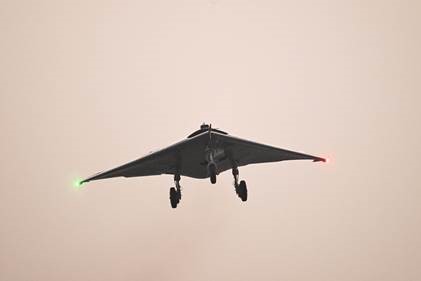Free Courses Sale ends Soon, Get It Now


Free Courses Sale ends Soon, Get It Now



Disclaimer: Copyright infringement not intended.
Context
The successful flight trial of the Autonomous Flying Wing Technology Demonstrator by the Defence Research and Development Organisation (DRDO) is a momentous achievement in India's aeronautical advancement.
Details
About Flying-wing UAVs
Design and Features:
Applications:
Conclusion
Flying-wing UAVs represent a cutting-edge evolution in unmanned aerial technology, offering a blend of stealth, endurance, and adaptability for diverse applications across military, civilian, and research sectors. Further advancements in design, control systems, and regulatory frameworks will continue to shape their role in the future of aerial operations and technological innovation.
MUST READ ARTICLES:
https://www.iasgyan.in/daily-current-affairs/unmanned-aerial-vehicle-uav
|
PRACTICE QUESTION Q. Discuss the significance of the successful flight trial of the Autonomous Flying Wing Technology Demonstrator by DRDO for India's defense and technological advancements. What does this accomplishment reflect in terms of indigenous aerospace capability and strategic implications for the country's armed forces? (250 Words) |
© 2024 iasgyan. All right reserved